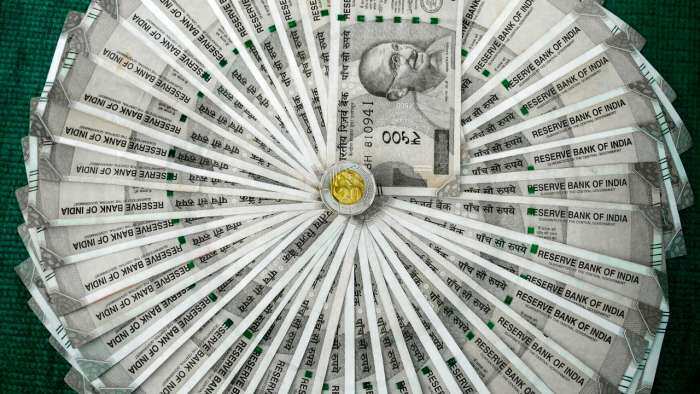The Tomato Crisis in India: Can We Expect a Price Ease Soon?
In recent weeks the prices of tomatoes have surged up to Rs 150 to Rs 200 per kilogram in retail markets and experts don’t see a sign of ease in pricing. According to the Consumer Affairs Department, tomato prices jumped 38 per cent month-on-month in June.
)
The recent surge in tomato prices has increased the monthly kitchen budgets for households across India and even many people have stopped consuming tomatoes. In recent weeks the prices of tomatoes have surged up to Rs 150 to Rs 200 per kilogram in retail markets and experts don’t see a sign of ease in pricing. The exorbitant rate of tomatoes is attributed to a combination of environmental, logistical, and market factors. The incessant rain and lack of fresh supply have affected the availability of the essential vegetable in the market.
Amid the rising prices of tomatoes the consumers are waiting the price to come down. However, multiple factors impact the tomato prices and there is no sign of ease in cost in the next few days.
Tomato supply crunch
According to the Maharashtra government, the current crisis stems from the extreme low prices that farmers have endured for six months, forcing them into financial losses. This resulted in a decline in tomato cultivation and delays in plantations. The farmers also faced a challenge for the sowing season due to the delayed monsoon. Additionally, unseasonal rain, hailstorms, and a 54 per cent rainfall deficit compounded the problem by affecting tomato production.
Tomato supply has significantly dipped in Maharashtra, the state with the largest tomato market, due to minimal production, leading to a supply shortage. On the bright side, fresh tomato arrivals are anticipated to resume in early August with the new crop harvest.
It's worth mentioning that the southern states have also been severely impacted. Heavy rainfall and flooding have resulted in a significant surge in tomato prices, reaching as high as Rs 140 per kg in Chennai.
Similar challenges were reported in Mumbai, where the price of tomatoes exceeded Rs 160 per kg due to unseasonal high rainfall and a fungal disease. In Punjab, incessant rain led to a sharp increase in tomato prices within just three days.
Current market situation and projections
In North India, tomato prices have soared to Rs 200 per kg due to the heavy rains affecting distribution and trade. This crisis is not only limited to tomatoes. Other vegetables like onions, potatoes, beans, cauliflower, cabbage, and ginger are also experiencing price hikes.
Meanwhile, according to the Consumer Affairs Department, tomato prices jumped 38 per cent month-on-month in June, while that of potatoes and onions increased 5.7 per cent and 4.2 per cent respectively. However, due to crop damages, traders suggest that the surge in tomato prices is unlikely to subside in the short run. Uneven monsoon rains have damaged crops of some perishable foods and hindered the movement of goods, resulting in shortages of basic ingredients for Indian cooking, such as tomatoes, chillies, and onions.
Future tomato price indication
Analysts predict a high pricing situation for the next two months until harvests from Madhya Pradesh and Rajasthan arrive.
Although tomato exports from India have decreased, countries like Bangladesh, Nepal, and the UAE remain top destinations for Indian tomatoes. Domestic tomato production is estimated to meet the demand of around 111 lakh tonnes, with Andhra Pradesh and Karnataka projected to produce 42 lakh tonnes collectively.
Steps taken by government to ease tomato price
The Ministry of Consumer Affairs has directed National Agricultural Cooperative Marketing Federation (NAFED) and National Cooperative Consumers Federation (NCCF) to procure tomatoes from Andhra Pradesh, Karnataka and Maharashtra. The tomatoes will be distributed in major consumption centres to bring down the retail price, the Department of Consumer Affairs said in a release.
In Delhi-NCR the stock of tomato will be distributed through retail outlets at discounted prices to the consumers by Friday, July 14.
Impact on Inflation
With rising costs of staple foods like tomatoes, the impact on inflation is expected to push costs higher in the month of July. In May 2023, India's annual inflation rate reached a 25-month low at 4.25 per cent, primarily driven by a slowdown in food inflation. However, expectations for June 2023 suggest a reversal in this trend, with CPI inflation projected to rise to 4.6 per cent. This rise is largely attributed to higher food prices resulting from damage to crops due to uneven monsoon rains. These climate events led to a shortage of essential cooking ingredients like tomatoes, chillies, and onions, causing a surge in their prices.
The National Statistical Office will be publishing the official inflation and consumer price index data for June on July 12 at 5:30 PM. While households continue to experience lower real savings and growth, the Reserve Bank of India will be more interested in the core inflation rates which may influence its rate-setting policies in the months ahead.
Get Latest Business News, Stock Market Updates and Videos; Check your tax outgo through Income Tax Calculator and save money through our Personal Finance coverage. Check Business Breaking News Live on Zee Business Twitter and Facebook. Subscribe on YouTube.
RECOMMENDED STORIES

SIP Calculation at 12% Annualised Return: Rs 10,000 monthly SIP for 20 years, Rs 15,000 for 15 or Rs 20,000 for 10, which do you think works best?

FD Rates for Rs 10 lakh investment: Compare SBI, PNB, HDFC, ICICI, and Post Office 5-year fixed deposit returns

LIC Saral Pension Plan: How much should you invest one time to get Rs 64,000 annual pension for life?

SIP Calculation at 12% Annualised Return: Rs 1,000 monthly SIP for 20 years, Rs 4,000 for 5 years or Rs 10,000 for 2 years, which do you think works best?

UPS vs NPS vs OPS: Last-drawn basic salary Rs 90,000 and pensionable service 27 years? What can be your monthly pension in each scheme?

Monthly Pension Calculations: Is your basic pension Rs 26,000, Rs 38,000, or Rs 47,000? Know what can be your total pension as per latest DR rates
01:39 PM IST










